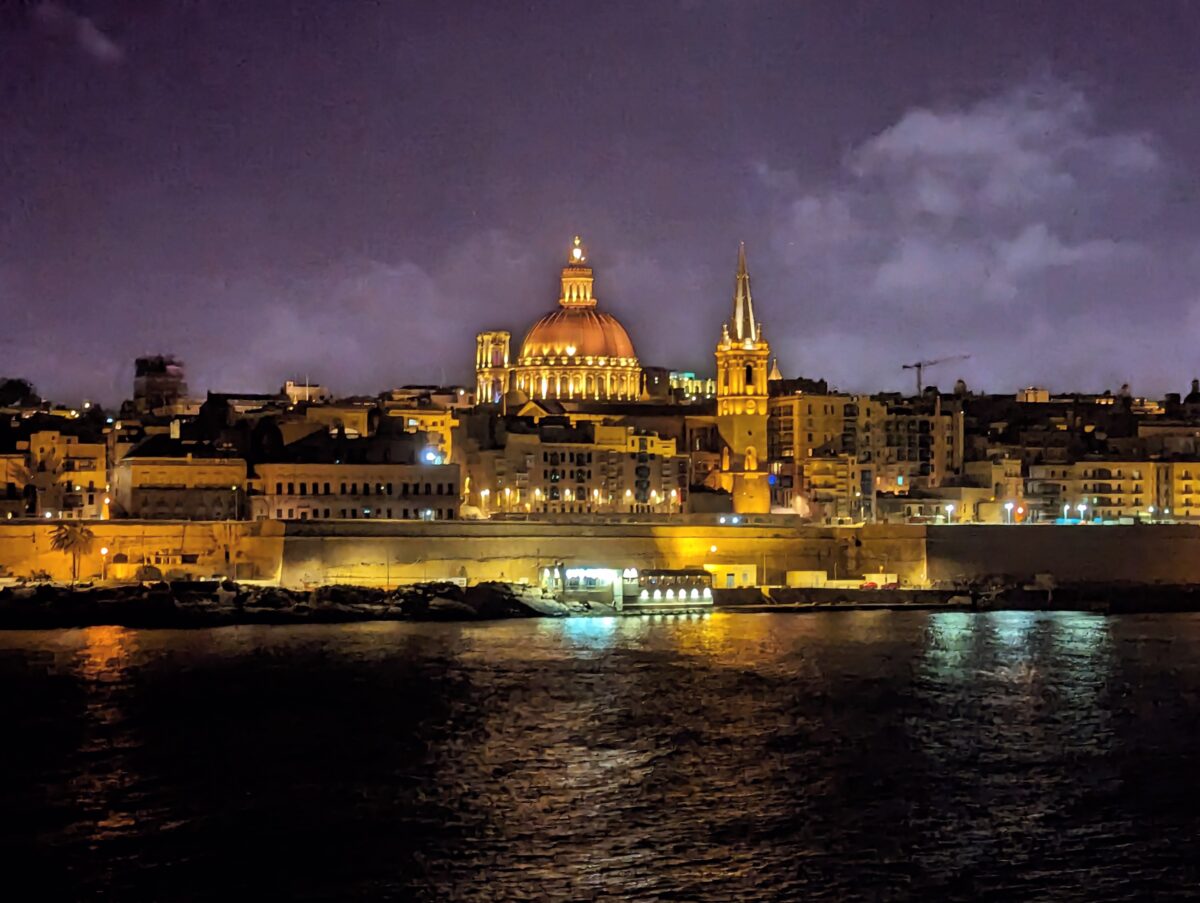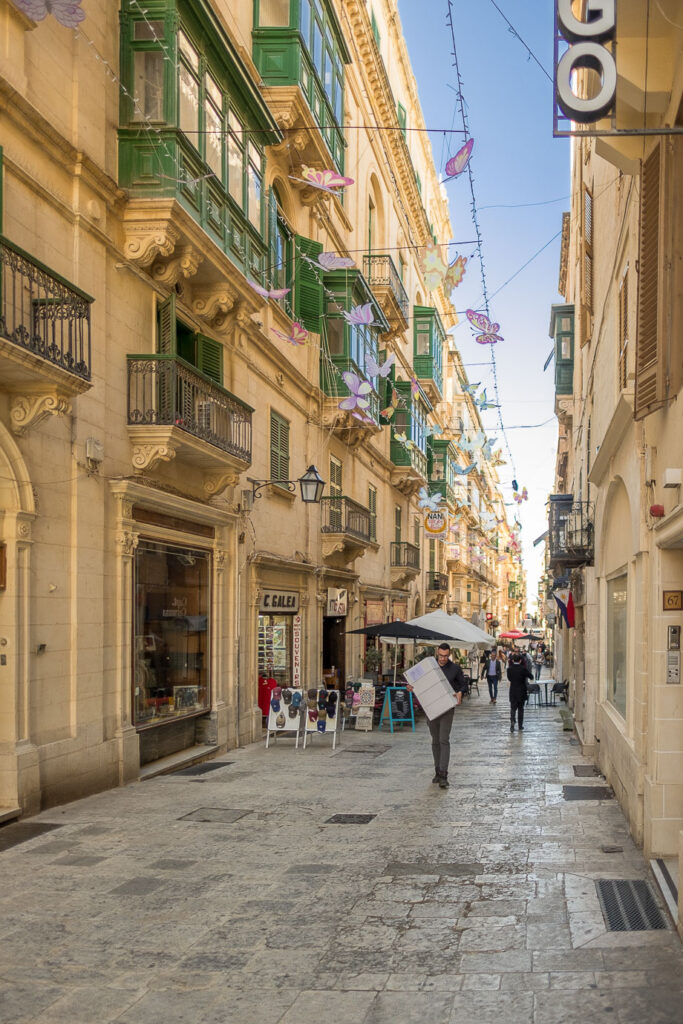Yes, Malta is really worth it. I expected another Cyprus. Both are historic mediterranean islands with a British history. Yes, there is a British influence. English is an official language and is spoken widely. There are British chains like Costa coffee and Marks & Spencers everywhere. There are plenty of British expats and tourists around.
But unlike Cyprus, Malta is a wealthly and sophisticated place, without the horrible tacky and tasteless tourist strips you find all over Cyprus full of drunken louts.
Malta Basics
Malta is an island near Italy. Off the south coast of Sicily. Actually, there are 3 inhabited islands – Malta (the largest and main island); Gozo, a slightly smaller island off the north coast of Malta, and Comino, the smallest. It is also quite near Tunisia and the Maltese language is quite similar to Tunisien (I refer to the “Arabic” spoken in Tunisia).
Maltese and English are the 2 official languages. Everyone speaks English fluently and apart from some street signs, all writing is in English. This makes getting around and communicating extremely easy.
The population is about 500,000 making it the 5th most densely populated country in the world. It’s been invaded by pretty much everyone over the last 6000 years, but ended up under British rule in the 19th century and achieved independence in 1964.
Malta has different “cities”, including the capital Valetta, which have merged into each other over time forming one continuous urban sprawl.
Malta is very multicultural. I was quite surprised how diverse the population is. There has been a lot of immigration into Malta for people to work in the tech and service industries. Malta has become rich from foreign investment, especially from high tech companies in the Gaming and Betting industries. These companies enjoy favourable tax breaks and have set up huge operations in Malta. There are many Philippinos, South Asians and, for some reason Venezuelans, in addition to the Europeans – predominantly Brits and Italians.
Food
Italian Food is everywhere, but despite being in the vicinity of the Tunisia, there was not so much in the way of middle eastern food. Instead, Malta has its own unique cuisine, with lots of heavy meat stews. The signature dish is rabbit stew. I highly recommend Ta Kria restaurant in Sliema. It’s a hard to find place down an alley way. The owner is the chef.
Getting round
There are basically 2 ways to get round: hire a car or take taxis. Hiring a car will give you the most freedom, but the disadvantage is that parking is pretty impossible anywhere. Roads are ok, but the traffic can be quite bad. Note that in Malta people drive on the left. I took taxis everywhere. Uber and Bolt are both available and are incredibly cheap.
Forget buses. They are horribly crowded and the air inside is suffocating. They take forever and the timetables are unreliable due to traffic jams. One day I took a bus to Mdina. Google maps is not reliable in Malta and showed me a direct bus going there taking 45 mins. I forgot to bring my water bottle, but I thought, it’s only 45 mins, what could possibly go wrong? Well, 2 hours later we finally arrived after zig-zagging across the whole island and stopping in every single little village. It must have been at least 50 degrees in the bus with no A/C or windows that could be opened.
Drugs
Alcohol and cigarettes are legal and freely available. Malta is also the first country in Europe to legalize cannabis. It is not however available to buy anywhere. Smoking is public is not allowed. Despite this, semi-synthetics like HHC and THC-P (gummies and vapes) are freely available from vaping and CBD stores. For those not familiar with semi-synthetics, these are natural occuring cannabanoids, which are present in cannabis at such low quantities, they are not psychactive. However, when extracted via a chemical process (hence the term “semi-synthetics”) they produce similar effects to regular cannabis. Exercise caution, especially if you have a low tolerance to natural cannabis, as it is easy to overdose and experience adverse effects like panic attacks.
Sliema
I was in Malta for 2 weeks and I split my time evenly between Sliema and St Paul’s Bay. Both are excellent locations. Sliema is an up market neighbourhood on a peninsula. It is home to fancy new offices and the most expensive apartments in Malta. It is extremely well located with great views across the harbour to Valetta. To get to Valetta, you can take the bus (slow and uncomfortable) or the ferry. It has great restaurants and a strip of up-market bars along with waterfront prominade.
You can also walk around the peninsula all the way to St John’s.
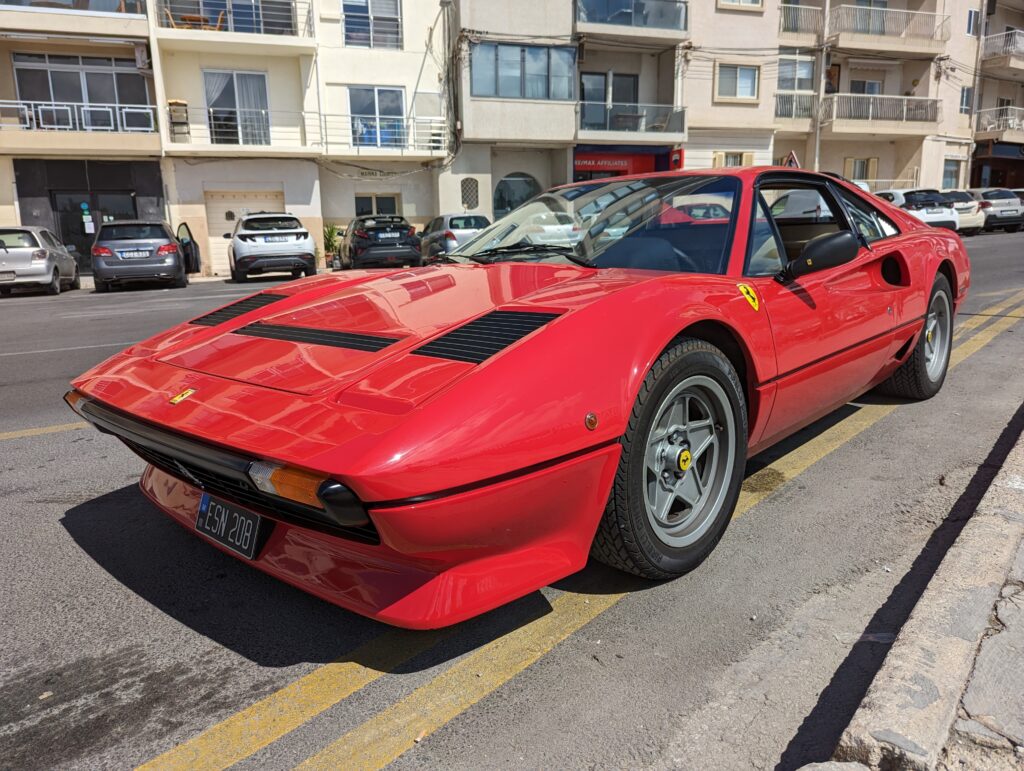
St John’s
This is the most popular area for tourists with the most modern high-rise hotels and is the main nightlife area. The nightlife there is tacky and basically sucks. It is horrible. Avoid.
The 3 Cities
These are actually small fortifications, located in the Grand between Sliema and Valetta. They feature some nice architecture and are worth a stroll around. They are much less crowded than the Valetta and the other tourist areas
Valetta
The capital city of Malta. Actually, it’s pretty small, but is packed with history and attractions – museums and churches. I was there in March and it was already pretty crowded. You can easily escape the crowds by exploring the side streets and back alleys. It’s really a day destination and is pretty dead and night. So, better to visit by day and stay in another neighourhood where things are a bit livelier at night.
St Paul’s
Another very attractive area in the north of Malta island. It features beautiful bays and historic monuments. Public transport is more reliable and traffic not quite so bad. It has great restaurants. It’s also a great stepping-stone to visit Gozo
Gozo
Malta’s second island and definitely worth a visit. I did a day trip, but you could also easily base yourself there for a few days. You can take your rental car on the ferry, or take a bus to the port and then take public transport. You can also use one of two hop-on hop-off bus services which are great value and very convenient. Get there early to make sure you can cover as much as possible as there is a lot to see and do. Gozo has a very pleasant main town, Victoria. All buses converge on Victoria. From there, you have the option of taking several routes to see the sights. There are some lovely seaside towns and beaches, plus some lagoons and cliffs. The most famous tourist attraction in Malta, the Azure Window, a rock formation on a cliff, forming a “window” was destroyed in 1917 by a storm. Strangely the tourist marketing in Malta has conveniently forgotten to update their brochures to remove the Azure Window… strange that.
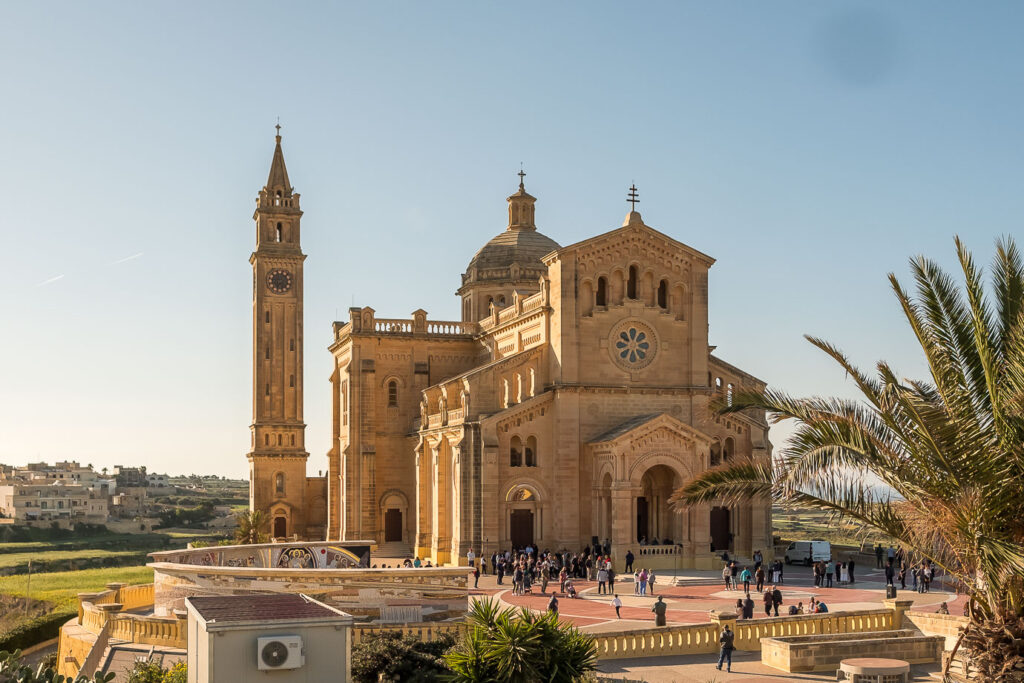
Mdina
Mdina is a village in the center of Malta, which is worth a visit. It is an historic town on a hillside featuring some nice churches. It was the capital of Malta up until the 16th century. You can wander around the alleyway for a few hours. There are some nice views of the surrounding countryside.
Note, getting there is a major pain in the arse unless you have your own transport. There is a bus service, but it meanders from hours stopping at every little village following a zig-zag route. It tooks about 2 hours to get there from Sliema, far exceeding the 45 minute estimate on Google Maps (note – don’t trust Google Maps in Malta). As previously mentioned the buses are crowded with no aircon and you can’t open the windows. On the route back, I took a Bolt for only around 10 Euros.
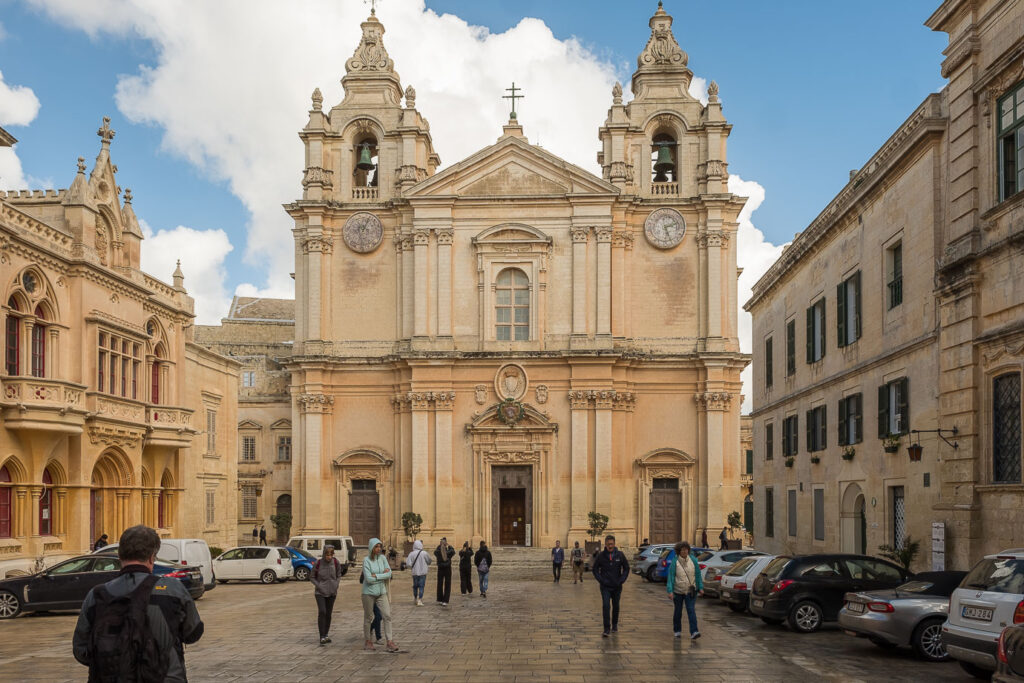
Conclusion
Malta is definitely worth visiting. It is a really nice place, easy to travel round, with plenty of history and natural attractions. Just avoid the peak summer season when it gets really crowded and unbearably hot.
